-
Happy Birthday ICMag! Been 20 years since Gypsy Nirvana created the forum! We are celebrating with a 4/20 Giveaway and by launching a new Patreon tier called "420club". You can read more here.
-
Important notice: ICMag's T.O.U. has been updated. Please review it here. For your convenience, it is also available in the main forum menu, under 'Quick Links"!
You are using an out of date browser. It may not display this or other websites correctly.
You should upgrade or use an alternative browser.
You should upgrade or use an alternative browser.
Anyone grow out Johaar?
- Thread starter grayeyes
- Start date
Rembetis
Active member
Aliceklar,
They will reach out if they have that option so you might be ok. Just be aware for the future that when adding that stuff you will get the actual heating action as with any composting. Also during that time there can be severe changes in P H when mixing globally depending on what additions you made. So if you have time to let it sit before using is best.
Also, you might want to try top dressing rather than mixing with water so you can cater to the needs of each plant.
They will reach out if they have that option so you might be ok. Just be aware for the future that when adding that stuff you will get the actual heating action as with any composting. Also during that time there can be severe changes in P H when mixing globally depending on what additions you made. So if you have time to let it sit before using is best.
Also, you might want to try top dressing rather than mixing with water so you can cater to the needs of each plant.
Last edited:
aliceklar
Active member
hi, not sure if I or someone else has noted this, but the reason for the clawing and curling on the leaves is because the soil is way too hot (too rich in NPK)
Aliceklar,
They will reach out if they have that option so you might be ok. Just be aware for the future that when adding that stuff you will get the actual heating action as with any composting. Also during that time there can be severe changes in P H when mixing globally depending on what additions you made. So if you have time to let it sit before using is best.
Also, you might want to try top dressing rather than mixing with water so you can cater to the needs of each plant.
Thank you both. I know I'm trying to do a thing that goes against the plants normal habits (they want to have their feet in the soil and shoot up to 4m tall... and growing them in less than 2 litres of compost because I have very little space but also want to grow enough plants to be able to select and take lines forward) so its a balancing act... I really appreciate the pointers from folk who know these plants much better than I do <3
Will make sure they get some flushes with plain rainwater.
aliceklar
Active member
It is very encouraging to see that it' possible to flower Himalayan strains in little set-ups, thank you for the pictures !
It is totally possible!

Last time I ran Johaar in 4.5 litre pots and managed to flower out two females in 16 and 18 weeks respectively. yields were actually better in some cases than the faster strains I was running alongside (Blueberry, Purple bud, Dance World). I think I started out at 12/12 with these last time, and only dropped to 11/13 near the end of flower when I was desparate for them to finish...
This time I am using much smaller pots, reduced vegging (less than 4 weeks) and went to 11/13 within a week of starting flower cycle - am looking to see what impact this will have on final time to harvest. Vegging under 12/12 or 14/10 is something I'm considering for next time, and then going straight to flower under 11/13.
aliceklar
Active member
End of 6th week in flower
End of 6th week in flower
All seem to have benefited from the repotting - looking generally more vibrant and darker green - although I think some leaf speckling of 1mm brown patches is a sign of excess nutrients. Leaf yellowing/drop seems to have stopped. #12, which was left in the smaller pot, is looking much paler.
#10 and #2 have the nicest form/densest buds so far.
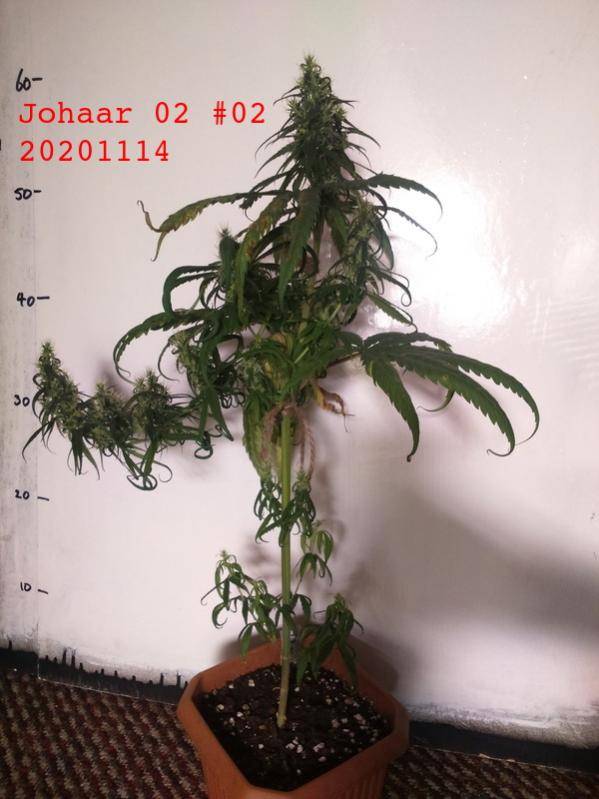
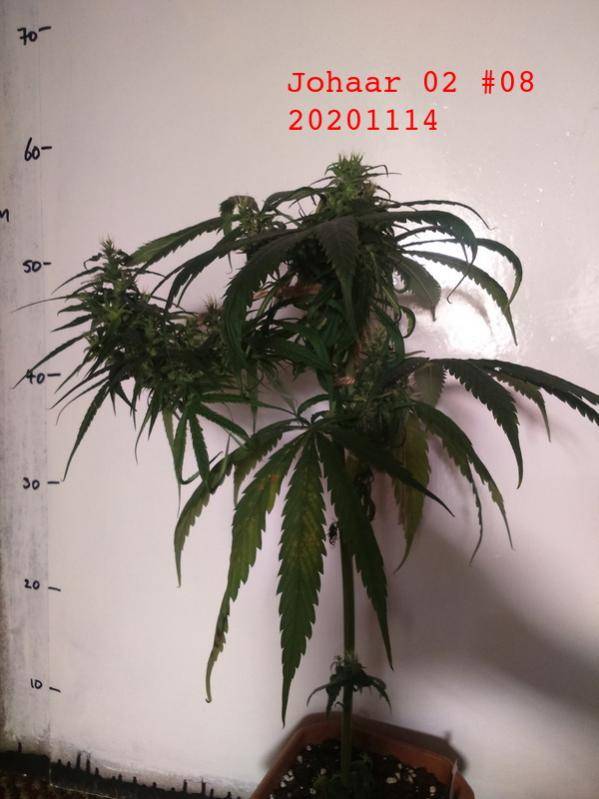

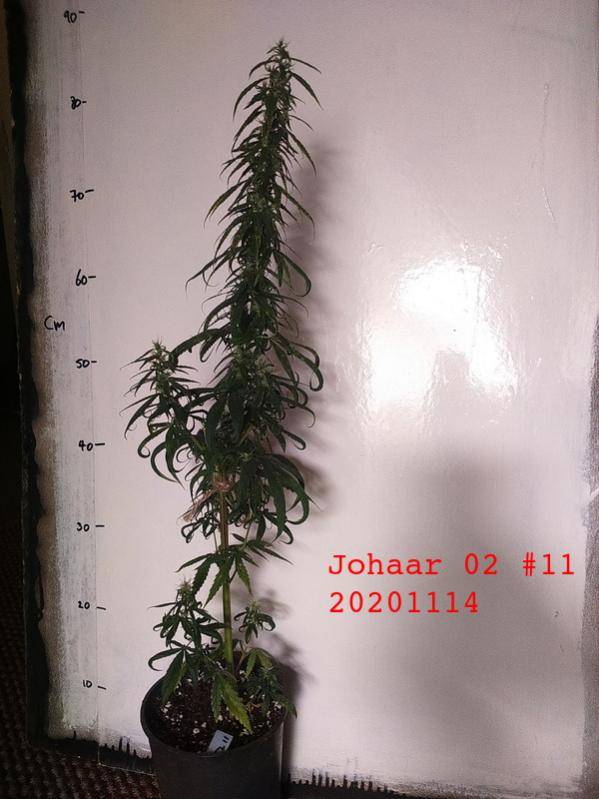
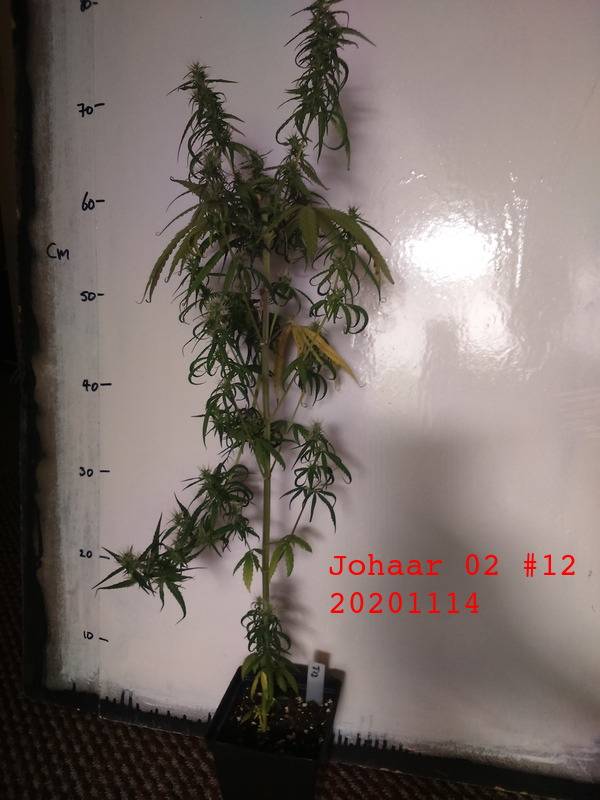
End of 6th week in flower
All seem to have benefited from the repotting - looking generally more vibrant and darker green - although I think some leaf speckling of 1mm brown patches is a sign of excess nutrients. Leaf yellowing/drop seems to have stopped. #12, which was left in the smaller pot, is looking much paler.
#10 and #2 have the nicest form/densest buds so far.
DownDeepInside
Member
I can attest that your soil is excessively rich with nutrients (cf the clawing). All these Himlayan landraces thrive in a poor soil. I usually use spent gardening soil when I deal with them. Repotting in bigger pots usually solve the problem.
aliceklar
Active member
I can attest that your soil is excessively rich with nutrients (cf the clawing). All these Himlayan landraces thrive in a poor soil. I usually use spent gardening soil when I deal with them. Repotting in bigger pots usually solve the problem.
Thank you Deepdown. Others have pointed out the same thing... I started giving them some feed initially because after a few weeks of plain rainwater and hardly any feed, the lower fan leaves were yellowing and dropping off, but maybe I mistook some other problem for lack of N? The clawing they have had since they were small but I hadnt worried about it because they otherwise looked healthy. I recently repotted into slightly bigger pots (1 litre --> 1.5 or 2 litre) and added a small amount of bonemeal mixed with some old blood fish and bone. I get that they like to have more legroom, and poorer soil... bigger pots sadly not an option for me as I am trying to evaluate multiple plants from seed in a very small space.
Will try using poorer soil next time, and experiment with even more dilute nutes (lower N), or just topdressing or weak compost tea if/when they show deficiencies. I'd be grateful for any specific pointers (given that using significantly larger pots is not possible with my setup).

Wondering if I might try - instead of half a dozen small pots - one large pot with half a dozen different scions grafted on (like in this thread https://www.icmag.com/ic/showpost.php?p=7754457&postcount=83). More fiddly, but would still allow me to evaluate multiple plants in a small space.
Last edited:
here's an escaped Nepali landrace in Langtang
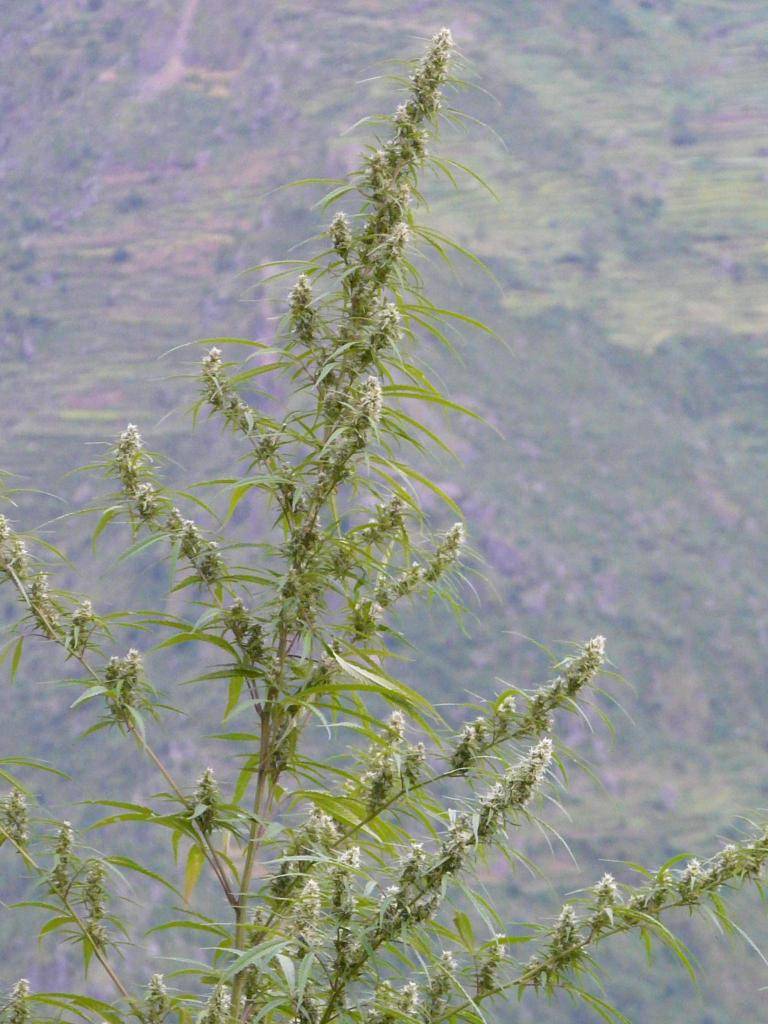
agree with your assessment that the plants are stressed by nurtients and pots
in the Himalaya, they are grown in the agricultural plots around homes or temporary seasonal dwellings
but it's misleading to imply the land is necessarily bad, in fact there are plenty of Himalayan villages with excellent black soil and good consistent water
manure is used too
Cannabis wants to put down roots in rich well-draining slightly sandy loams
it evolved to grow on river banks where mammals water, and where land moves, e.g. due to erosion and seismic acitivity
very likely it first evolved in northeasten Tibet, i.e. Central Asia, which is why it shows a lot of phenotypic plasticity (adapted to mountains)
anyway, modern Cannabis liquid feed formulas are insanely strong
i.e. the problem is as much the very high nutrient level modern Cannabis hybrids are adapted to, plus their adaptation to pots -
modern hybrids are the freaks, not landraces
All these Himlayan landraces thrive in a poor soil. I usually use spent gardening soil when I deal with them. Repotting in bigger pots usually solve the problem.
agree with your assessment that the plants are stressed by nurtients and pots
in the Himalaya, they are grown in the agricultural plots around homes or temporary seasonal dwellings
but it's misleading to imply the land is necessarily bad, in fact there are plenty of Himalayan villages with excellent black soil and good consistent water
manure is used too
Cannabis wants to put down roots in rich well-draining slightly sandy loams
it evolved to grow on river banks where mammals water, and where land moves, e.g. due to erosion and seismic acitivity
very likely it first evolved in northeasten Tibet, i.e. Central Asia, which is why it shows a lot of phenotypic plasticity (adapted to mountains)
anyway, modern Cannabis liquid feed formulas are insanely strong
i.e. the problem is as much the very high nutrient level modern Cannabis hybrids are adapted to, plus their adaptation to pots -
modern hybrids are the freaks, not landraces
aliceklar
Active member
I agree about the way that modern hybrids should be seen as the outliers (not the landrace plants) with their need for / tolerance of strong fertilizers. It probably hasnt been intentional, but I suppose its a consequence of them being bred in an environment (often hydroponic) where strong ferts are in use - I'm guessing because of a mindset taken from the commercial horticulture industry. Plants in a breeding population less tolerant to the strong nutrients are selected against, those capable of soaking them up are favoured. Rinse and repeat for many generations.i.e. the problem is as much the very high nutrient level modern Cannabis hybrids are adapted to, plus their adaptation to pots -
modern hybrids are the freaks, not landraces
My background is organic gardening/permaculture/survivalist, and I'm trying to minimise use of chemicals - so being able to survive on little more than water, in smallish pots, will be a prized trait in my own seed saving and breeding experiments.
Anyway, cool to hear the evolutionary origin! Wish I had a riverbank, and there was no prohibition! And thanks again for making Johaar available. All of the friends I've shared it with have loved it - its much appreciated (including by those who were previously smoking strong hybrid weed - problem is that they now want to grow it outdoors and that wont work with the amount of daylight here... but that is another story).
Here are the plants 10 days after re-potting:
Because I wanted to see what difference it would make, I left #12 (top right) in her original 1 litre pot, and after a couple of initial dilute (1/4 strength) feeds have not fed her again till tonight (when I gave dilute epsom salts and P, with a little maxicrop seaweed extract). All plants have been watered daily with plain rainwater, and not fed further. The plants that were repotted (into 1.5 or 2 litre pots) have stopped dropping leaves and become greener, although they do now have a bit of leaf freckling with brown necrotic patches. In general, for now, they look much perkier.
If you look closely to the right, you can also see some paint splatters from when I re-painted the veg area recently, top right... Oops.

Last edited:
DownDeepInside
Member
but it's misleading to imply the land is necessarily bad, in fact there are plenty of Himalayan villages with excellent black soil and good consistent water
manure is used too
Thanks for clarifying. I never had the chance to travel that far in Asia.
My view was based on my experience with the strains. When I would use fresh commercial gardening soil, they just clawed like aliceklar's Johaars. They seemed to be much happier when I would use spent gardening soil (from previous year). Also I mentionned, repotting was usually the problem solver : 1L then 4L then 6L. Then I would wait for the stretching to pass by (the first three weeks) and then 11L. After that a chunky table spoon of worm casting if needed and that was it. Liquid nutes should be avoided like the plague .
DownDeepInside
Member
Oh I forgot to mention. They all seemed to consistently love crappy weather. I thought that was a nice change  but is to be expected given the heavy monsoon rains they withstand in their ancestral homes.
but is to be expected given the heavy monsoon rains they withstand in their ancestral homes.
 but is to be expected given the heavy monsoon rains they withstand in their ancestral homes.
but is to be expected given the heavy monsoon rains they withstand in their ancestral homes.If you look closely to the right, you can also see some paint splatters from when I re-painted the veg area recently, top right... Oops.

On a more serious note, be careful of paint fumes, next time better move the plants out when redecorating
aliceklar
Active member

On a more serious note, be careful of paint fumes, next time better move the plants out when redecorating
I know mate! I'm a lazy gardener...
Thanks for clarifying. I never had the chance to travel that far in Asia.
My view was based on my experience with the strains. When I would use fresh commercial gardening soil, they just clawed like aliceklar's Johaars. They seemed to be much happier when I would use spent gardening soil (from previous year). Also I mentionned, repotting was usually the problem solver : 1L then 4L then 6L. Then I would wait for the stretching to pass by (the first three weeks) and then 11L. After that a chunky table spoon of worm casting if needed and that was it. Liquid nutes should be avoided like the plague .
pots are an issue here too
straight into soil is always best
better grow them right into land
and if they get too big in summer, just hack them back
they won't care


